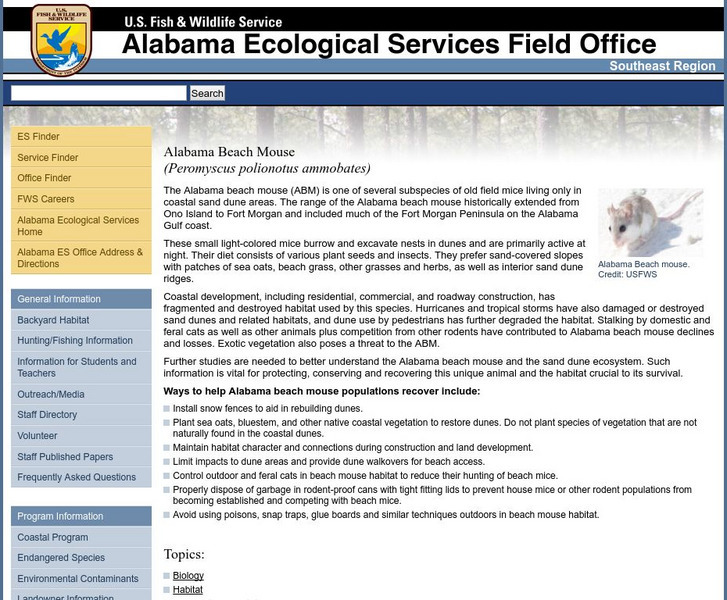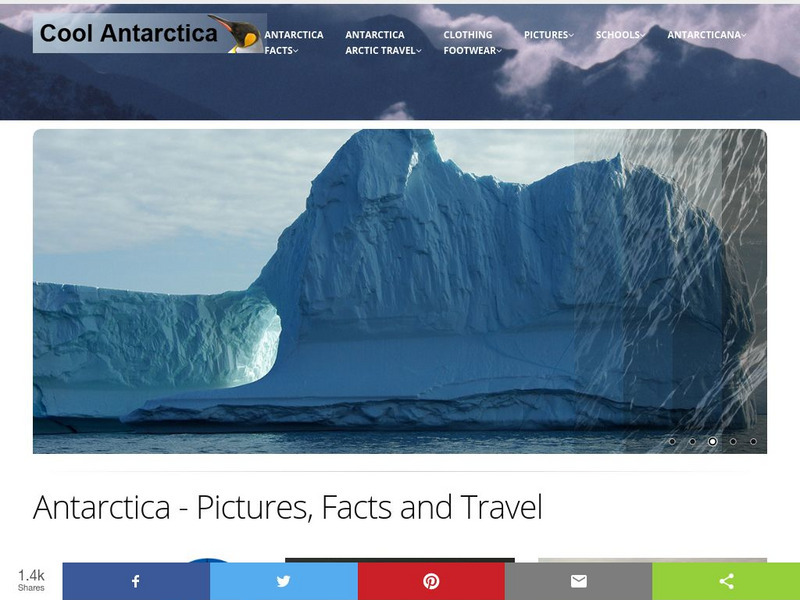Other
Western North Carolina Vitality Index: Ecosystem Threats
The forests of Western North Carolina are threatened by a wide variety of environmental stressors and disturbances, such as insects, disease, invasive species, drought, fire, hurricanes, tornadoes, and ice storms. A stressor is any kind...
Utah STEM Foundation
Utah Stem Action Center: Great Salt Lake Ecosystem
This lesson plan provides an eight-day flow of educational activities in which learners use the Great Salt Lake ecosystem to explore food webs and how changes in living and nonliving factors affect different populations.
National Geographic
National Geographic: Oil and Bird Populations
After learning about the diversity of wildlife in the Gulf of Mexico, students focus on birds and their patterns of behavior. They then how an oil spill might affect migrating birds, and possible ways to help them in the event of an oil...
PBS
Pbs Learning Media: A Subsistence Culture Impacted by Climate Change
This short video explains how warmer temperatures in the Arctic are transforming the ecosystem and affecting the Athabaskan people, threatening their way of life. [2:59]
Other
Pde Sas: Relationships Among Organisms
In this lesson, students compare various types of relationships among organisms (i.e., biotic interactions). Students will: explain the roles of producers and consumers, and predators and prey in an ecosystem. Explain the levels of order...
Annenberg Foundation
Annenberg Learner: The Habitable Planet: Ecology Lab
Create the parameters of your own ecosystem by choosing which producers and consumers live there. Visualize how the food web operates and species populations change. This simulator mimics the food web within a typical ecosystem and gives...
Science Struck
Science Struck: The 6 Chief Levels of Organization in Ecology
Describes six levels of organization in the biological world - individual species, population, community, ecosystem, biome, and biosphere.
US Fish and Wildlife Service
U.s. Fish & Wildlife Service: Alabama Beach Mouse
Read about the endangered Alabama Beach Mouse, and find out what can be done to restore its population numbers.
CK-12 Foundation
Ck 12: Earth Science: Biological Communities Study Guide
Review the relationship between populations and ecosystems.
Other
Digital Library for Earth System Education: Teaching Box: Seasonal Upwelling
A suite of lessons focusing on the process of upwelling. Inquiry-based exploration of seasonal upwelling includes marine food webs, food production in the ocean, wind-driven ocean currents, and seasonal changes in biotic and abiotic...
PBS
Pbs Learning Media: Wildlife Biology
In this What's Up in the Environment? video segment, learn how various indicator species are used to monitor the environmental condition of the Everglades.
PBS
Pbs Learning Media: Dustin Madden: Science Teacher
In this video profile produced for Teachers' Domain, meet teacher Dustin Madden, an Inupiaq who hopes to inspire students to take an active role in protecting the natural environment by giving them a foundation in math and science.
PBS
Pbs Learning Media: La'ona De Wilde: Environmental Biologist
In this video profile produced for Teachers' Domain, meet La'ona DeWilde, an environmental biologist who integrates her Athabascan heritage and her Western scientific training to help remote Alaskan villages address environmental issues.
Other
Cool Antarctica: Pictures, Information, and Travel Guide
A complete look at the continent of Antarctica. You can view pictures, utilize a fact file index, and get a historical timeline.





